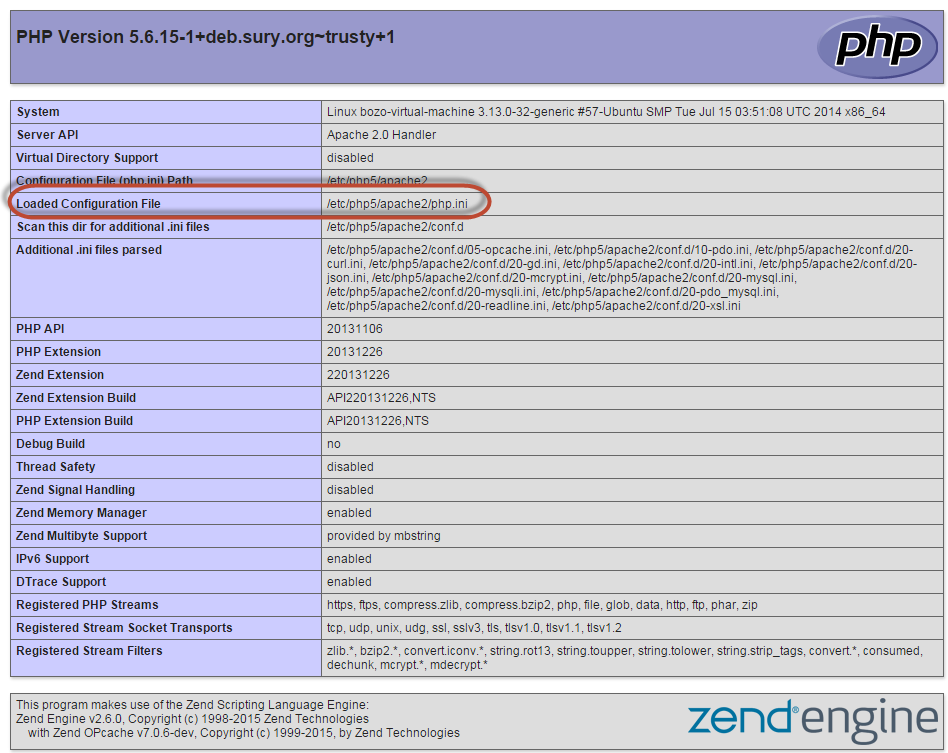Required PHP settings
This topic discusses how to set required PHP options.
-
Set the system time zone for PHP; otherwise, errors like the following display during the installation and time-related operations like cron might not work:
PHP Warning: date(): It is not safe to rely on the system's timezone settings. [more messages follow] -
Set
always_populate_raw_post_data = -1always_populate_raw_post_datais deprecated in PHP 5.6 and is dropped in PHP 7.0.x. This setting causes PHP to always populate$HTTP_RAW_POST_DATAwith raw POST data. Failure to set this properly in PHP 5.5 or 5.6 results in errors when connecting to the database. -
Set the PHP memory limit.
Our detailed recommendations are:
- Compiling code or deploying static assets,
756M - Installing and updating Magento components from Magento Marketplace,
2G - Testing,
2G
- Compiling code or deploying static assets,
-
Disable
asp_tagsIf
asp_tags areenabled, errors display when accessing PHTML templates.asp_tagswill be removed in PHP 7. -
Enable
opcache.save_comments, which is required for Magento 2.1 and later.We recommend you enable the PHP OpCache for performance reasons. The OPcache is enabled in many PHP distributions.
Magento 2.1 and later use PHP code comments in the
getDocCommentvalidation call in thegetExtensionAttributesmethod inMagento\Framework\Api\ExtensionAttributesFactory.php.
To avoid issues during installation and upgrade, we strongly recommend you apply the same PHP settings to both the PHP command-line configuration and to the PHP web server plug-in's configuration. For more information, see the next section.
Step 1: Find PHP configuration files
This section discusses how you find the configuration files necesary to update required settings.
To find the web server configuration, run a phpinfo.php file in your web browser and look for the Loaded Configuration File as follows:

To locate the PHP command-line configuration, enter
php --ini
Use the value of Loaded Configuration file.
If you have only one php.ini file, make the changes in that file. If you have two php.ini files, make the changes in all files. Failure to do so might cause unpredictable performance.
PHP OPcache settings are typically located either in php.ini or opcache.ini. The location might depend on your operating system and PHP version. The OPcache configuration file might have an [opcache] section or settings like opcache.enable.
Use the following guidelines to find it:
-
Apache web server:
For Ubuntu with Apache, OPcache settings are typically located in
php.ini.For CentOS with Apache or nginx, OPcache settings are typically located in
/etc/php.d/opcache.iniIf not, use the following command to locate it:
sudo find / -name 'opcache.ini' -
nginx web server with PHP-FPM:
/etc/php5/fpm/php.ini
If you have more than one opcache.ini, modify all of them.
Step 2: How to set PHP options
- Open a
php.iniin a text editor. - Locate your server’s time zone in the available time zone settings
-
Locate the following setting and uncomment it if necessary:
date.timezone = - Add the time zone setting you found in step 2.
-
Change the value of
memory_limitto one of the values at the beginning of this section.For example,
memory_limit=2G -
Required for PHP 5.6, recommended for PHP 5.5. Locate
always_populate_raw_post_data, uncomment it if necessary, and set it as follows:always_populate_raw_post_data = -1 -
Locate the following setting:
asp_tags = - Make sure its value is set to
Off. - Save your changes and exit the text editor.
- Open the other
php.ini(if they are different) and make the same changes in it.
Step 3: Set OPcache options
-
Open your OpCache configuration file in a text editor:
opcache.ini(CentOS)php.ini(Ubuntu)/etc/php5/fpm/php.ini(nginx web server (CentOS or Ubuntu))
- Locate
opcache.save_commentsand uncomment it if necessary. - Make sure its value is set to
1. - Save your changes and exit the text editor.
-
Restart your web server:
- Apache, Ubuntu:
service apache2 restart - Apache, CentOS:
service httpd restart - nginx, Ubuntu and CentOS:
service nginx restart
- Apache, Ubuntu: